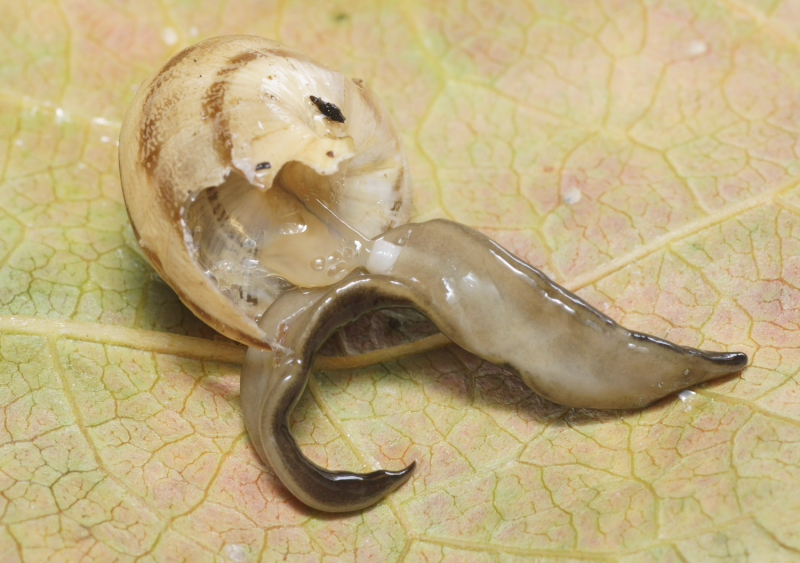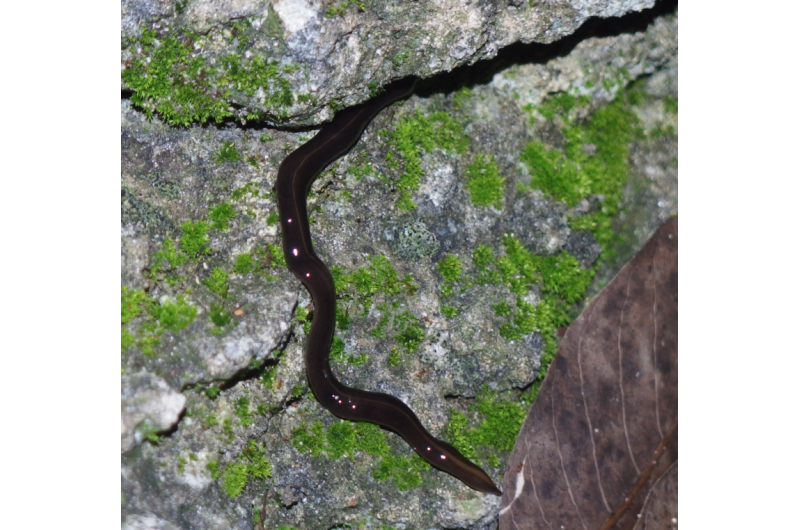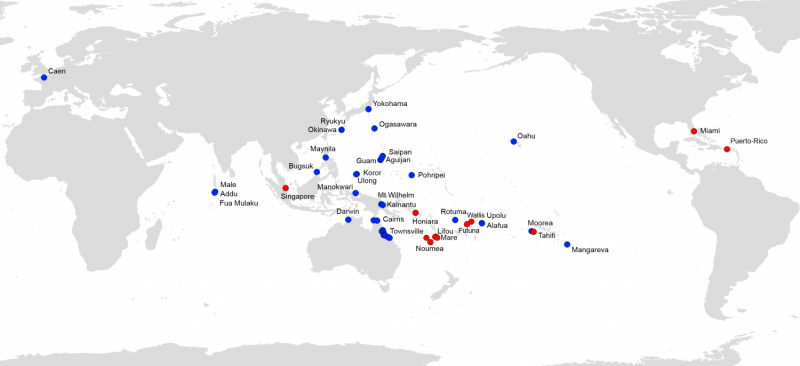Discovery in the US of the New Guinea flatworm—one of the worst known invasive species

The land planarian Platydemus manokwari, or New Guinea flatworm, is a highly invasive species, already reported in many territories in the Pacific area, and as well as in France. This is the only land planarian in the '100 worst invasive alien species' list and it has now been found in additional localities including islands in the Pacific area, Puerto Rico, the first record in the Caribbean, and the first report in mainland U.S., in Florida.
Platydemus manokwari, the New Guinea flatworm, consumes land snails and thus endangers endemic species. Very flat, it measures 50 mm long and 5 mm wide, the back is a black olive colour with a clear central stripe, and it has a pale white belly. The head is elongated, with two prominent black eyes and the mouth is in the middle of the belly. Although it lives on the ground, it is able to climb trees to follow and consume native snails.
An international research effort in to the spread of this invasive species was made up of 14 co-authors from eight countries and was led by Jean-Lou Justine of the Institute of Systematics, Evolution, Biodiversity, Paris, France (Muséum National d'Histoire Naturelle / CNRS / UPMC / EPHE). Their findings are published today in the Open Access Journal, PeerJ.
Specimens of the flatworm from various territories were identified by their characteristic appearance, a histological study and molecular analysis of the gene Cytochrome Oxidase Type I (which is often used to characterize animals). As a result, the species is now reported in additional countries and territories in the Pacific, including New Caledonia (mainland and Loyalty Islands), Tahiti (French Polynesia), Wallis and Futuna, Singapore, and the Solomon Islands, as well as in San Juan (Puerto Rico) and several gardens in Miami, Fla.
Two haplotypes (genetic variants) of the Cytochrome Oxidase Type I sequence were detected: the 'World haplotype' found in France, New Caledonia, French Polynesia, Singapore, Puerto Rico and Florida; and the 'Australian haplotype' found in Australia. The only locality with both haplotypes was in the Solomon Islands. The country of origin of Platydemus manokwari is New Guinea, and Australia and the Solomon Islands are the countries closest to New Guinea from which the researchers had specimens. This suggest that two haplotypes exist in the area of origin of the species, but that only one of the two haplotypes (the 'World haplotype') has, through human agency, been widely dispersed.

Platydemus manokwari is a known threat for endemic terrestrial molluscs. The record in Florida is of particular concern because it is in mainland America. Until now, infested territories were mostly islands, and the spread of the species from island to island is limited. However, the flatworms now established in Florida will not be subjected to these limitations. In addition to their natural spread, flatworms can easily be passively spread with infested plants, plant parts and soil. Therefore, Platydemus manokwari could potentially spread from Florida throughout the U.S. mainland, and this should be considered a significant threat to the whole of the U.S. and even to the rest of the Americas.

Journal information: PeerJ
Provided by PeerJ



















